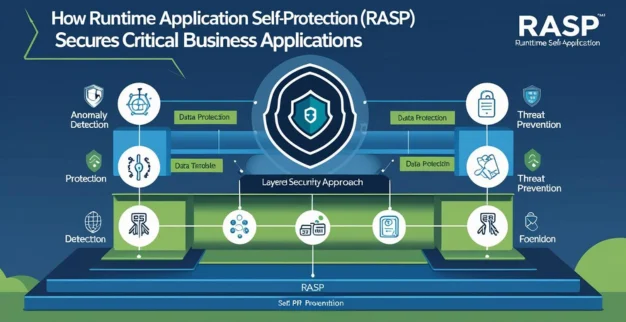How to Secure Critical Business Apps With RASP Application Security
By: Ganesan D
13 Aug 2025
Category: Application Security
App security isn’t just a checkbox—it’s vital to keeping your business safe, data protected, and user trust intact. Especially for companies in Dubai, where application security Dubai isn’t just best practice—it’s a standard expectation.
What Is RASP—and Why It’s a Game Changer
Runtime Application Self-Protection (RASP) isn’t another firewall—it's your app protecting itself from the inside out. Embedded within the application runtime, RASP constantly monitors behavior, identifies threats, and can automatically block harmful actions as they happen.
Think about it this way: traditional tools scan from the perimeter, watching what goes in. RASP sees what’s happening inside. That context-aware insight helps detect threats like SQL injections or zero-day attacks that might pass through other defenses undetected.
Advantages of RASP Application Security
- Real-time, application-aware protection: It monitors inputs and internal app behavior—ideal for blocking sophisticated attacks instantly.
- Less noise, more signal: With deep visibility into how your app runs, RASP reduces false alarms compared to WAFs and network defenses.
- Defense even for the unknown: It can halt zero-day exploits, thwarting attacks targeting new vulnerabilities still waiting to be patched.
- Seamless integration: You typically don’t need to rewrite or recompile your app—RASP can deploy with minimal fuss.
- Continuous, environment-agnostic protection: Whether your app lives in the cloud, on-premises, or in hybrid setups—RASP moves with it.
- Supports DevSecOps: RASP delivers actionable insights to help developers understand real-time attacks and fix vulnerabilities faster.
How to Introduce RASP in Your Dubai-Focused App Security Strategy
- 1.Align RASP with business needs: Identify your most sensitive web and mobile applications—those handling customer data, payments, or core services—and prioritize them for RASP integration.
- 2.Choose the right deployment mode: Start with monitor mode—observe how RASP reports on attacks—before switching to full protection mode.
- 3.Combine RASP with existing defenses: RASP works best alongside WAFs, IDS, and other tools, acting as a last line of defense if perimeter security fails.
- 4.Test, refine, and optimize: Track alerts and blocked attacks. Fine-tune RASP policies and thresholds to fit your application's unique behavior patterns.
- 5.Build DevSecOps feedback loops: Feed RASP data back to development teams. Use it to uncover hidden code flaws, improve code hygiene, and inform future releases.
- 6.Comply confidently: RASP-generated logs and alerts can support audit requirements—especially helpful under regional regulations demanding robust app-level security.
Final Thoughts: Why RASP Makes Sense for Dubai Businesses
In fast-growing tech markets like Dubai, data security isn't just operational—it's reputational. With RASP application security, your apps don't just live—they actively protect.
This shift means fewer disruptions, more confident releases, and resilient operations—even when attackers get creative. RASP isn't magic, but it's the kind of intelligent, real-time guard that keeps your business—and your users—safe.



